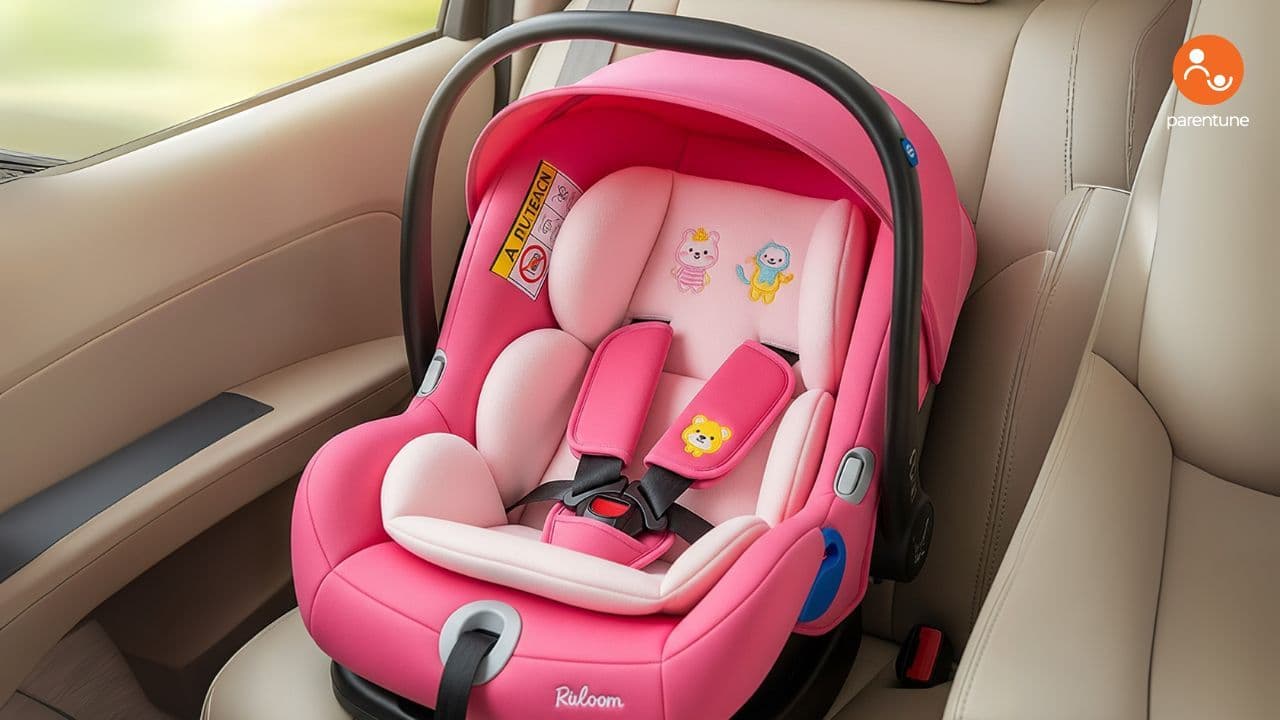babycare-products
Newborn Car Seat Expiry Dates: Why They Matter More Than You Think

A car seat isn’t just a piece of baby gear.
It’s a life-saving device.
And like milk or medicine, it expires.
Yet most new parents never check the date. Some don’t even know it exists.
So let's pause the diaper talk for a second. Because this is one of those hidden systems in parenting that can have real consequences—and no one’s really talking about it.
Doctor Q&As from Parents like you
Why Would A Car Seat Expire in the First Place?
Plastic weakens.
Regulations change.
Safety standards evolve.
Car seats are built to protect newborns during the most vulnerable phase of life. But they're made of materials—plastic shells, foam padding, metal parts—that degrade with time, exposure to sunlight, heat, humidity, and daily wear.
Now add in this truth:
A seat that looks perfectly fine on the outside may quietly lose its structural integrity on the inside.
And that's the catch.
How Long Does A Newborn Car Seat Actually Last?
Each manufacturer sets its own expiration date. Most fall in the 6 to 10 years range from the date of manufacture—not from the date of purchase.
Let’s be specific:
-
Graco: Typically 7–10 years
-
Britax: 6 years for infant seats, 9 for convertibles
-
Chicco: Around 6 years
-
Evenflo: 6–10 years depending on the model
You’ll usually find the expiration molded into the plastic shell or printed on a label underneath the seat. Not next to the cup holder. Not in the manual you lost three moves ago.
You may also like to read:
11 Breastfeeding Accessories That Help to Breastfeed Easier
What Happens If You Use An Expired Car Seat?
It’s not illegal.
But it’s not safe either.
Expired seats:
-
May not meet current crash test standards
-
May have weakened materials that crack under impact
-
May lack newer safety tech—like better side-impact protection or improved harness systems
-
Are often not accepted in hospitals or by airlines
If the worst happens, an expired seat could fail at the moment it’s needed most.
And in a system that’s already full of parenting "what-ifs", this is one you can control.
Why Do Parents Miss This Detail So Often?
Because the seat still looks new.
Because it was a gift.
Because it was expensive.
Because it's been passed down from cousin to cousin and feels like family.
But here's the thing:
Good intentions don’t make expired safety gear any safer.
This isn’t about judgment. It’s about systems.
At Parentune, we’ve seen how easily the parenting information gap can become a risk gap. That’s why our platform shares expert-verified advice that real parents use, backed by lived experience—not just instruction manuals.
What If You’re Using A Hand-Me-Down Car Seat?
A hand-me-down seat is like a secondhand parachute—you need to really trust its past.
Here’s what to check:
-
Expiration date – If it’s past due, don’t use it. Period.
-
Crash history – Was it ever involved in a collision? Even a minor fender bender counts.
-
Visible wear – Cracks, frayed straps, missing parts = unsafe
-
Recalls – Check the model number on the manufacturer's site or the NHTSA database
-
Instructions – Missing manual? Download it. Every detail matters.
If any of these raise a red flag, it’s safer to say thank you—and no thank you.
When Should You Replace Your Infant Car Seat?
There are a few clear triggers:
-
It’s expired (obviously)
-
It’s been in an accident (even if your baby wasn’t in it)
-
Parts are broken, missing, or jammed
-
Your child has outgrown it by height or weight
Pro tip: Check both the weight limit and shoulder height markers—babies grow vertically fast.
Many new parents switch to a convertible seat too early or too late. If you’re unsure, platforms like Parentune often host live expert chats and peer stories that can help you decode the nuance.

Also read:
How To Find The Expiry Date On Your Seat (Without Losing Your Mind)
Look here first:
-
Back of the seat – Embossed into the plastic or on a sticker
-
Bottom of the base – Especially for infant bucket-style seats
-
User manual – If it’s missing, most brands offer downloadable PDFs
-
Manufacturer's website – Many have lookup tools using your model number
If you can’t find it, call the company. They’ve heard it all before.
A Hidden Pattern: Why This Issue Keeps Getting Missed
This isn’t just about seats. It’s about systems.
Parenting is filled with urgent noise—feeding charts, nap apps, growth milestones. But expiry dates? They’re silent. They don’t beep or remind or nudge.
And in the chaos of early parenting, what doesn’t scream for attention often goes unnoticed.
That’s the system flaw we need to fix. Together.
So What Should You Do Now?
If you’re:
-
Expecting – Check the expiry before buying or borrowing
-
Already using a car seat – Flip it over today. Check the date
-
Considering reusing for Baby #2 – Review all five hand-me-down checks
-
Done with the seat – Don’t donate expired seats. Trash it responsibly
-
Unsure – Reach out to Parentune’s community or safety experts
Because parenting is hard enough. Let’s not leave safety up to chance.
The Bigger Picture: Safety As A Mindset
Here’s the takeaway:
Expiry dates aren’t about fear. They’re about stewardship.
When you understand that systems decay—materials, information, even habits—you start looking differently at the tools you trust.
And parenting is, at its core, about building systems that protect what matters most.
That’s why at Parentune, we don’t just give advice. We build awareness—so no one has to learn safety the hard way.
Final Thought: What’s the Real Expiration Date?
It’s the moment the seat can no longer guarantee safety.
Whether that’s 6 years or 9 years, whether you got it from a showroom or your sister-in-law’s attic.
Check the label.
Know the history.
Replace when needed.
Because some things—like peace of mind—are worth renewing before they run out.
Be the first to support
Be the first to share
Related Blogs & Vlogs
No related events found.